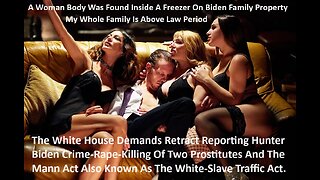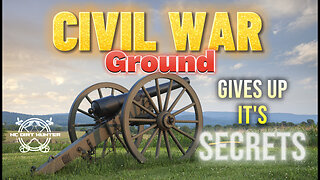What is Martial law in the US ? Habeas corpus ? Insurrection Act of 1807 ? NWO ?
Martial Law, Gun Confiscation and FEMA Death Camps Coming Soon ? As of Jan 4, 2023, the Insurrection Act of 1807 still applies in limiting a US President's ability under Title 10 to federalize National Guard troops for martial law purposes
The Insurrection Act of 1807 is a United States federal law that empowers the President of the United States to deploy US military and federalized National Guard troops within the United States in particular circumstances, such as to suppress civil disorder, insurrection, and rebellion. Martial law in the United States refers to times in United States history in which in a region, state, city, or the whole United States was placed under the control of a military body.
On a national level, both the US President and the US Congress have the power, within certain constraints, to impose martial law since both can be in charge of the militia In each state, the governor has the power to impose martial law within the borders of the state In the United States, martial law has been used in a limited number of circumstances, such as New Orleans during the Battle of New Orleans; after major disasters, such as the Great Chicago Fire of 1871, the 1906 San Francisco earthquake, or during riots, such as the Omaha race riot of 1919 or the 1920 Lexington riots; local leaders declared martial law to protect themselves from mob violence, such as Nauvoo, Illinois, during the Illinois Mormon War, or Utah during the Utah War; or in response to chaos associated with protests and rioting, such as the 1934 West Coast waterfront strike, in Hawaii after the Japanese attack on Pearl Harbor, and during the Civil Rights Movement in response to the Cambridge riot of 1963.
The martial law concept in the United States is closely tied to the right of habeas corpus, which is, in essence, the right to a hearing and trial on lawful imprisonment, or more broadly, the supervision of law enforcement by the judiciary. The ability to suspend habeas corpus is related to the imposition of martial law. Article 1, Section 9 of the US Constitution states, "The Privilege of the Writ of Habeas Corpus shall not be suspended, unless when in Cases of Rebellion or Invasion the public Safety may require it"
There have been many instances of the use of the military within the borders of the United States, such as during the Whiskey Rebellion and in the South during the Civil Rights Movement, but those acts are not tantamount to a declaration of martial law. Deployment of troops does not necessarily mean that the civil courts cannot function, which is one of the keys, as the US Supreme Court noted, to martial law. In United States law, martial law is limited by several court decisions that were handed down between the American Civil War and World War II. In 1878, Congress passed the Posse Comitatus Act, which forbids US military involvement in domestic law enforcement without congressional approval
Throughout history, martial law has been imposed at least 68 times in limited, usually local areas of the United States. The Insurrection Act controls when the President can use components of the U.S. military for domestic law enforcement purposes. The Insurrection Act is one of the major exemptions to longstanding statutes but also the distinctive American tradition not to involve the military in domestic law enforcement. One of the characteristics of America is not to have the military patrol communities, but rather to have local law enforcement doing it. Actions taken under the Insurrection Act are exempt from the provisions of the Posse Comitatus Act. The courts have held that the Posse Comitatus Act does not apply to guard members called to duty by the governor. This means that governors may use their own guard members or guard personnel from neighboring states to perform law enforcement functions without violating the act.
Early in the history of the Republic, the delegates to the Constitutional Convention and the members of the subsequent Congresses understood that the President required power to execute the laws of the land. Under authority of the Militia Clause, Congress enacted the Militia Act of 1792 and the subsequent Insurrection Act of 1807 to provide the President with authority to call forth the militia of the states to execute the laws and suppress insurrections.
New language found its way into the Insurrection Act as a consequence of the Civil Rights Act of 1871. In many southern states after the Civil War, the Klu Klux Klan and other disgruntled groups interfered with public order. When Republican North Carolina Governor William Woods Holden called out the state militia against the Klan in 1870, the result was a local backlash culminating with his impeachment in 1871. In response to the Klu Klux Klan and the broader conditions of lawlessness throughout the South, Congress passed the Civil Rights Act. The relevant section of the Act (10 USC § 333) reads as follows:
"That in all cases where insurrection, domestic violence, unlawful combinations, or conspiracies in any State shall so obstruct or hinder the execution of the laws thereof, and of the United States, as to deprive any portion or class of the people of such State of any of the rights, privileges, or immunities, or protection, named in the constitution and secured by this act, and the constituted authorities of such State shall either be unable to protect, or shall, from any cause, fail in or refuse protection of the people in such rights, such facts shall be deemed a denial by such State of the equal protection of the laws to which they are entitled under the constitution of the United States: and in all such cases …it shall be lawful for the President, and it shall be his duty to take such measures, by the employment of the militia or the land and naval forces of the United States, or of either, or by other means, as he may deem necessary for the suppressions of such insurrection, domestic violence, or combinations…"
The Insurrection Act permitted the President to call the militia or the National Guard into Federal service to suppress insurrections or to enforce the law, including when State authorities were unable or unwilling to secure the constitutional rights of their citizens. Rarely in the history of the Nation had the National Guard been Federalized under the provisions of the Insurrection Act. There were ten occasions since World War II when the National Guard was Federalized under the provisions of the Insurrection Act, and that was largely done to enforce and protect the civil liberties or the Federal laws that guaranteed civil liberties in the States that were not affording those civil liberties or violating Federal law.
In 1957, President Dwight D. Eisenhower relied on the Insurrection Act to remove obstructions of justice in respect to enrollment and attendance at public schools in the Little Rock, Arkansas. Likewise, President John F. Kennedy invoked the Insurrection Act in 1962 and 1963 to send federal troops to Mississippi and Alabama, respectively, to enforce constitutionally protected civil rights threatened by local reactions to desegregation effort.
As recently as 1992, President George W. Bush relied upon the Insurrection Act to federalize much of the California National Guard and employ an additional force of approximately 4,000 active Army and Marine troops to suppress the Los Angeles Riots, which had flared up as the result of the controversial acquittal of white police officers who used force against an African American suspect.
During the 1992 Los Angeles, California riots soldiers and airmen from the California Army and Air National Guard were activated for state duty to quell the riots, and help the police restore order. Guardsmen were quickly committed into areas where they had to contend with considerable shooting, fires, and looting. The riots were declared a national emergency by President George H.W. Bush, and under the provisions of the Insurrection Act he deployed Title 10 military assets to assist in quelling the riots. The declaration insurrection was critical because it rendered Posse Comitatus moot for the purposes of allowing Title 10 forces to secure the streets, suppress looting and rioting, and in general enforce the law in Los Angeles. As a part of his declaration, the President also federalized the National Guard forces involved, in order to bring them under a unified command system.
From 1871 to 2006, the Insurrection Act remained largely unchanged. By 2006, the Insurrection Act was actually comprised of five sections within Title 10 of the United States Code. Each of the individual code sections prescribed the situations in which the President could have invoked the Insurrection Act of 10 U.S.C. §§ 331-335. The critical section is Setion 332:
"Sec. 332. Use of militia and armed forces to enforce Federal authority - Whenever the President considers that unlawful obstructions, combinations, or assemblages, or rebellion against the authority of the United States, make it impracticable to enforce the laws of the United States in any State by the ordinary course of judicial proceedings, he may call into Federal service such of the militia of any State, and use such of the armed forces, as he considers necessary to enforce those laws or to suppress the rebellion."
Before 2006, the President had multiple legal bases available to authorize his use of federal military forces in a variety of law enforcement and natural disaster circumstances. The amended law included several conditions that must be satisfied before the President could authorize the use of federal forces. The most important of these conditions was a showing of lawlessness in a state that sufficiently demonstrated the state’s inability to enforce the laws and maintain public order. Instances in which a state cannot enforce the laws and maintain public order are rare.
Nevertheless, Congress amended the Insurrection Act in 2006 to create the Enforcement of the Laws to Restore Public Order. This statute stirred controversy as it arguably represented an unwarranted expansion of Presidential power. Additionally, while the statute attempted to address the kind of lawlessness seen in New Orleans immediately following Hurricane Katrina in 2005, the provision arguably offered no improvement over the Insurrection Act in instances of lawlessness or the Stafford Act in instances of disaster. The 2006 Act made it easier for the President to invoke the Insurrection Act in cases well short of insurrection.
Without ever having been invoked, and in the face of strong opposition, the Enforcement of the Laws to Restore Public Order was repealed on January 28, 2008 and the previous Insurrection Act was restored. It was prudent to repeal this legislation. Moreover, future laws and policies to improve disaster response across the whole-of-government and the private sector should be consistent with the principles in the 2008 National Response Framework, which advocates tiered response rather than a primarily federal response in most instances. The rare instances of catastrophic disaster that might require the President to shortcut tiered response and assume federal control at the outset of the situation should be clearly defined in law.
The crowd of rioters that breached the Capitol on January 6 after a Trump rally bought into the debunked theory, repeated by the president and his allies, that election fraud caused Biden’s win at the polls. The rioters stormed the Capitol as legislators certified Biden’s victory in a joint session of Congress. This gave an initial impression that Trump supporters went too far after the president “incited” an insurrection, according to legislators who impeached him a second time. Soem of the rioters planned to kidnap legislators and murder Vice President Mike Pence.
Adherents of QAnon believe a broad set of conspiracy theories that centres on the belief that Trump was chosen to defeat a cabal of liberal elites, including politicians, who harvest the blood of trafficked children to keep themselves young. Amazon stopped hosting Parler, the “free speech” platform for conservatives. Amazon lawyers claimed in court hearings the site featured calls to assassinate Senate Minority Leader Chuck Schumer, House Speaker Nancy Pelosi, members of the media and others. There was an unprecedented level of cooperation between myriad far-right groups and increased support from politicians, who are able to rally under the perceived grievance of being censored after suspensions by social media giants.
The FBI, OHS, and NCTC remain concerned about the potential for a loosely organized, sustained, and significant domestic violent extremist [DVE] population mobilizing to violence based on social media calls to target government infrastructure or officials. The shared false narrative of a "stolen" election and opposition to the change in control of the executive and legislative branches of the federal government may lead some individuals to adopt the belief that there is no political solution to address their grievances and violent action is necessary. Additionally, in-person engagement between DVEs of differing ideological goals during the Capitol breach likely served to foster connections, which may increase DVEs' willingness, capability, and motivation to attack and undermine a government they view as illegitimate.
In the near term, DVEs could exploit upcoming events to engage in or justify violence, including events attended by "boogaloo" adherents scheduled nationally from 16 to 20 January; the 20 January Presidential Inauguration and associated events in Washington, DC; and any departure of the 4Sth President from office prior to the end of his term. The "boogaloo" is a concept most commonly used by DVEs to reference an impending second civil war or insurgency against the US Government Calls for revolution may especially resonate with MVEs, who often justify violence based on their belief that they are guardians of the Constitution and the legacies of the American Revolution.
The National Guard response could include an estimated 21,000 Guard members from all states and territories. National Guard troops from all 50 states, three territories and the District of Columbia are supporting law enforcement through the presidential inauguration next week. Up to 25,000 National Guard men and women have been authorized to conduct security, communication and logistical missions in support of federal and D.C. authorities through the Jan. 20 inauguration.The exact dates of departure and return of the service members will not be released prior them departing and returning due to operational security and the safety of service members.
As of Jan. 15, about 7,250 Guard Soldiers and Airmen were in the National Capital Region coordinating with civilian authorities responsible for inauguration support. The U.S. Secret Service, U.S. Park Service, and U.S. Capitol Police requested National Guard support. The Secret Service is the lead federal agency coordinating security for the inauguration.
Military involvement in the Presidential Inauguration dates back 232 years to when Gen. George Washington began his inaugural journey from Mount Vernon to New York City. Local militias, the modern-day National Guard, joined his inaugural procession as it passed through towns along the route to be joined by members of the regular Army, additional local militia, and Revolutionary War veterans once Washington arrived in New York City. This presidential military escort then accompanied him to Federal Hall for the presidential oath, and the National Guard and other military units have continued this tradition of inaugural support ever since. The National Guard and other military units have continued this tradition of inaugural support ever since.
In past presidential inaugurations, the District of Columbia National Guard has escorted presidents, marched in ceremonial parades, conducted crowd management and ensured the safety of participants of the event. While the D.C. National Guard plays no less pivotal a role, this year turned out to be a bit different.
The reality of life during a pandemic already brought anticipated changes to the 59th presidential inauguration: a limited in-person footprint, social distancing guidelines and other precautions to prevent the spread of coronavirus.
At the beginning of January, approximately 340 National Guardsmen were assigned to manage traffic and provide logistical support to law enforcement. “First amendment demonstrations” were planned for January 5 and 6. Then, protests devolved into riots at the Capitol on January 6. D.C. Mayor Muriel Bowser requested additional assistance, and, in response, acting Defense Secretary Chris Miller mobilized 6,200 Guardsmen from six states – Maryland, Virginia, New York, New Jersey, Delaware and Pennsylvania to include 1,100 members of the D.C. National Guard.
The National Guard members of each state remain under their respective governor’s control and adhere to D.C. law. To meet current and future inauguration support requirements, the National Guard received support requests from the Secret Service, Capitol Police, and Park Police and have been authorized to provide up to 15,000 Guard members. As of Jan. 14, there are about 7,000 National Guard members on the ground in the District of Columbia from D.C., Arizona, Colorado, Delaware, Illinois, Maryland, New Jersey, New Mexico, New York, Ohio, Pennsylvania, Vermont, Virginia, and Washington state.
Bringing in additional servicemembers is not unprecedented. More than 7,500 National Guard soldiers and airmen from 44 states, two territories and the District supported the 58th presidential inauguration in 2017. “The District of Columbia National Guard is in a support role to the local authorities, which will enable them to provide a safe environment for our fellow citizens to exercise their first amendment right to demonstrate,” said Maj. Gen. Walker, Commanding General of the D.C. National Guard.
Every member of the National Guard – military and civilian – swears an oath to uphold and defend the Constitution. Miller said in a written release from the Pentagon, “I, and the people I lead in the Department of Defense, continue to perform our duties in accordance with our oath of office, and will execute the time-honored peaceful transition of power to President-elect Biden on January 20.”
National Guard Soldiers and Airmen from across the states and territories augmented the District of Columbia National Guard to provide crowd management; traffic control in and around the Capitol, National Mall and White House; as well as communications, logistical, medical, and public affairs support. Enduring partnerships with local, state and federal agencies, built on trust and performance, directly contribute to the National Guard’s success in homeland response. More than 1,600 members of the National Guard in Florida, Puerto Rico, Kentucky, Kansas and Utah are among the latest to send reinforcements to Washington.
Gov. Gretchen Whitmer approved the deployment of several hundred Michigan National Guard members to Washington, D.C. ahead of President-elect Joseph Biden’s inauguration. This authorization came in response to a request for assistance from the National Guard Bureau. “The men and women of the Michigan National Guard continually prove themselves as an invaluable source of compassion and reassurance to their fellow Michiganders, stepping up from their communities to serve this state during some of our most challenging times,” said Whitmer. “Ensuring a peaceful transition of presidential power is essential to our democracy, and I’m proud that these outstanding Michiganders will be lending their professionalism, training, and seasoned experience to ensure the safety and well-being of our fellow Americans in Washington, D.C.”
Approximately 650 U.S. Army National Guard Soldiers with the South Carolina National Guard joined service members from other states and territories in the nation’s capital to provide support for the 59th Presidential Inauguration, Jan. 20, 2021, in the District of Columbia. The South Carolina National Guard worked in support of the District of Columbia National Guard and local civilian authorities.
Airmen and Soldiers of the Alaska National Guard departed Jan. 17, headed to the National Capital Region to assist the District of Columbia National Guard and federal civilian authorities with the 59th Presidential Inauguration. Approximately 80 Alaska Guardsmen volunteered, and most of them will be transported by a KC-135 Stratotanker from the Alaska Air National Guard’s 168th Wing, Eielson Air Force Base on a direct seven-hour flight to Joint Base Andrews, Maryland.
The Idaho National Guard sent more than 300 Soldiers and Airmen to Washington, D.C. today to assist district and federal agencies with the presidential inauguration. These Guardsmen will augment the D.C. National Guard and serve in support of the U.S. Secret Service, the lead federal agency responsible for coordinating the event. Personnel began departing from Gowen Field less than 72 hours after Governor Brad Little approved the mission.
The West Virginia National Guard (WVNG) had approximately 475 personnel on the ground in Washington, D.C., beginning to assist civilian law enforcement and officials with the protection of property and providing a safe environment for citizens to exercise their right to peacefully assemble and protest leading up to the 59th Presidential Inauguration on Jan. 20. Additionally, as a part of this mission, a specialized team of Soldiers and Airmen from the 35th Chemical, Biological, Radiological, Nuclear and High-Yield Explosive (CBRNE) Enhanced Response Force Package (CERFP) will provide assistance to the District of Columbia Fire and Emergency Medical Services and 33rd Civil Support Team in consequence management.
Approximately 800 members of the Maryland National Guard were on duty in Washington to support the 59th presidential inauguration with a Maryland general officer taking a critical role in the effort. Army Brig. Gen. Janeen Birckhead, assistant adjutant general for Maryland, assumed command in DC as the Task Force Capitol commander. Birckhead took charge of more than 3,500 troops in DC, providing support to law enforcement through the presidential inauguration. "The troops under my command are from many different states’ National Guard," said Birckhead. "We’re a conglomerate, diverse force that’s well-trained, equipped, and prepared to provide the best available military support to the civil authorities and the District of Columbia.”
Use of the military to support civil authorities stems from core national values as expressed in the Constitution. Article I, Section 8 states, “Congress shall have power... to provide for calling forth the Militia to execute laws of the Union, suppress Insurrections, and repel Invasions.” Article II, Section 3 states the President, “...shall take care that the Laws be faithfully executed.” The 10th Amendment reads, “The powers not delegated to the United States by the Constitution, nor prohibited by it, are reserved to the States respectively...,” providing the basis that Federal government support, including DoD assistance, is provided in support of State and local authorities.
The President is authorized by the Constitution and Title 10 (10 USC 331–334) to suppress insurrections, rebellions, and domestic violence. After issuing a Cease and Desist Order, the President issues an executive order that directs the Attorney General and the SECDEF to take appropriate steps to disperse insurgents and restore law and order. The Attorney General is then responsible to coordinate the federal response to domestic civil disturbances. The restrictions of the Posse Comitatus Act no longer apply to federal troops executing the orders of the President to quell the disturbance in accordance with Rules of the Use of Force (RUF) approved by the DoD General Counsel and the Attorney General.
USNORTHCOM Concept Plan (CONPLAN) 2502 (Civil Disturbance Operations), is the plan for supporting state and local authorities during civil disturbances. This plan serves as the foundation for any CDO operation and standardizes most activities and command relationships. Tasks performed by military forces may include joint patrolling with law enforcement officers; securing key buildings, memorials, intersections and bridges; and acting as a quick reaction force. The JTF commander, a general officer, coordinates all DoD support with the Senior Civilian Representative of the Attorney General (SCRAG). DoD will usually establish a JTF headquarters near where the Attorney General’s local representative is based.
Garden Plot is the DoD Civil Disturbance Plan, the generic Operations Plan [OPLAN] for military support related to domestic civil disturbances. The department of the Army Civil Disturbance Plan (DA GARDEN PLOT), is the governing publication for planning, deployment, employment, and redeployment of federal military resources involved in countering domestic civil disturbances. Military assistance to Federal, State, and local government (including government of U.S. territories) and their law enforcement agencies for civil disturbances and civil disturbance operations, including response to terrorist incidents, are referred to cumulatively as "Military Assistance for Civil Disturbances (MACDIS)."
The DoD Strategy for Homeland Defense and Civil Support (2005) defines Defense Support of Civil Authorities (DSCA) as, “DoD support, including federal military forces, the Department’s career civilian and contractor personnel, and DoD agency and component assets, for domestic emergencies and for designated law enforcement and other activities.” It notes that DSCA is also often referred to as Civil Support. There has been discussion in some DoD offices of distinguishing between the two terms: Civil Support as a total force construct with DSCA involving Federal support only and not include the National Guard in Title 32 or State Active Duty status. But as of 2008 they remained essentially synonymous.
Until the 2005 DoD Strategy for Homeland Defense and Civil Support, the term Military Assistance to Civil Authorities (MACA) was essentially synonymous with Civil Support and served as an overarching construct that included three subordinate mission sets: Military Support to Civil Authorities (MSCA), Military Assistance to Civil Disturbances (MACDIS) and Military Assistance to Civil Law Enforcement Agencies (MSCLEA). Defense Support of Civil Authority (DSCA) has replaced MACA. The term MACDIS has been replaced by Civil Disturbance Operations (CDO).
Civil disturbances are riots, acts of violence, insurrections, unlawful obstructions or assemblages, or other disorders prejudicial to public law and order. The term civil disturbance includes all domestic conditions requiring or likely to require the use of Federal Armed Forces pursuant to the provisions of Chapter 15 of Title 10, United States Code.
The Posse Comitatus Act of 1878 (PCA), subsequent amendments and policy decisions prohibits the use of federal military forces (to include Reserve forces) to perform internal police functions. PCA thus restricts the type of support DoD can provide domestic law enforcement organizations. There are a wide variety of exceptions to the PCA and the law essentially gives the President all the authority he needs to employ DoD forces inside the U.S. although there may appropriately be political consequence that would inhibit such employment.
The term posse comitatus [po.si komitei.tAs, -tius , [med. (Anglo) L., force of the county: see prec. and county.] applies to the 'The force of the county’; the body of men above the age of fifteen in a county (exclusive of peers, clergymen, and infirm persons), whom the sheriff may summon or ‘raise’ to repress a riot or for other purposes; also, a body of men actually so raised and commanded by the sheriff.
In the United States the posse comitatus was perhaps most important on the Western frontier (there known as a posse), but it has been preserved as an institution in many states. Sheriffs and other peace officers have the authority to summon the power of the county. In some counties it is a crime to refuse assistance. In general, members of a posse comitatus have been permitted to use force if necessary to achieve a posse’s legitimate ends, but state laws differ as to the legal liability of one who in good faith aids an officer himself acting beyond his authority.
Congress sought to terminate the prevalent use of federal soldiers in civilian law enforcement roles in the South during the Reconstruction Period following the Civil War. The Posse Comitatus Act of 1878 created general prohibition against use of military personnel in civilian law enforcement. The most renowned statutory exception has been traditionally referred to as The Insurrection Acts (10 USC 331–334) that were modified and renamed to Enforcement of the Laws to Restore Public Order by the 2007 National Defense Authorization Act (NDAA). The new language clarifies Presidential authority to invoke the acts for situations resulting from natural disasters and other emergencies.
The President is authorized by the Constitution and laws of the United States to employ the Armed Forces of the United States to suppress insurrections, rebellions, and domestic violence under various conditions and circumstances. Planning and preparedness by the Federal Government and the Department of Defense for civil disturbances are important due to the potential severity of the consequences of such events for the Nation and the population.
Military resources may be employed in support of civilian law enforcement operations in the 50 States, the District of Columbia, the Commonwealth of Puerto Rico, and the U.S. territories and possessions only in the parameters of the Constitution and laws of the United States and the authority of the President and the Secretary of Defense, including delegations of that authority through this Directive or other means.
The primary responsibility for protecting life and property and maintaining law and order in the civilian community is vested in the State and local governments. Supplementary responsibility is vested by statute in specific Agencies of the Federal Government other than the Department of Defense. The President has additional powers and responsibilities under the Constitution of the United States to ensure that law and order are maintained.
The mission at NORTHCOM is to anticipate events in the homeland and to be prepared to respond, to either prevent the attacks or defeat them if they occur and then to mitigate the consequences of those attacks should they occur. In addition, NORTHCOM has a secondary mission to provide defense support to civil authorities. It's an old mission that the Army used to lump together under the Garden Plot scenario, in that there was always a brigade that was prepared to respond to civil disturbances.
The secretary of the Army is the Executive Agent for DOD in matters pertaining to civil disturbances. The U. S. Army Director of Military Support (DOMS) is the action agent and the DOD point of contact in all such matters. The Secretary of the Army as the DOD Executive Agent, will, in the event of a civil disturbance within CONUS, exercise through the Chief of Staff, U.S. Army, the direction of those forces committed to him by the military services. In the event of civil disturbances in U. S. territories and possessions and the Commonwealth of Puerto Rico outside CONUS, the DOD Executive Agent exercises the direction of those forces assigned or committed to the commanders of unified or specified commands.
The Coast Guard, as well as the other Services, is required to maintain support plans. GARDEN PLOT is the name applicable to such service plans. Standard Operating Procedures (SOPs) of operational commanders should reflect guidance herein. Military assistance to civil authorities is a peacetime matter, not to be confused with military support of civil defense (MSCD), which is a wartime function.
DOD task force operations to quell civil disturbances off military property can be initiated only by Presidential order. Cases of such initiation in the past occurred during the urban political and racial unrest in the Vietnam era when federal troops were deployed on a number of occasions. GARDEN PLOT operations may include terrorist incidents, though the FBI, not the Army, will then be the lead agent. In the event of civil unrest upon the high seas and waters subject to the jurisdiction of the United States, where in the Coast Guard has standing statutory responsibility, Coast Guard units will in all likelihood be legitimately involved in law enforcement operations well before any Presidential invocation of civil disturbance plans. The Coast Guard character for law enforcement and cooperation with civil authorities is much broader than that of DOD services. DOD services are subject to law enforcement restrictions that are not applicable to the Coast Guard. For policy reasons (i.e., to ensure unity of command and control), there may be instances when these restrictions are imposed upon Coast Guard personnel under a DOD task force commander's operational control.
Cooperation with other services in GARDEN PLOT operations is paramount and requires particular understanding of task force constitution and chains of command. Civil disturbance planning cannot be deliberate in that force mix and locales are obviously indeterminate. Guidance herein will provide a basis for Coast Guard participation and related area and district supplemental instructions or other directives. Actual Coast Guard participation will in all likelihood be the logical extension of traditional law enforcement functions.
The right of the United States to use federal forces to protect federal property and functions is an accepted principle of government. However, this use of federal forces is warranted only when the need for protection of Federal property or functions clearly exists and State or local authorities cannot or will not give adequate protection. Prior to the designation of a civil disturbance objective area and employment of federal forces by Presidential order, the Army may reinforce other federal forces defending federal property.
Elements of the U. S. Army Intelligence and Security Command (USAINSCOM) maintain liaison with federal, state, and municipal investigative and police agencies and on order of Department of the Army, collect and report civil disturbance information in response to requests from DA, the Personal Liaison Officer for the Chief of Staff, Army (PLOCSA), task force commanders, CONUS Army commanders, and other specified commands.
Military intelligence units have a very limited role during domestic support operations other than civil disturbance operations. U.S. Dep't of Defense, Reg. 5240.1-R, Procedures Governing the Activities of DOD Intelligence Components that Affect United States Persons (Dec. 1982)[hereinafter DOD 5240.1-R], does not apply to DOD intelligence components when they perform authorized law enforcement activities, including civil disturbance activities. In such cases, DOD intelligence components may collect, report, process, and store information on the activities of persons and organizations not affiliated with the Department in accordance with U.S. Dep't of Defense, Dir. 5200.27, Acquisition of Information Concerning Persons and Organizations Not Affiliated with the Department of Defense (7 Jan. 1980) and U.S. Dep't of Defense Civil Disturbance Plan (GARDEN PLOT) (15 Feb. 1991).
The Insurrection Act permitted the President to call the militia into Federal service to suppress insurrections and to enforce the law, including when State authorities were unable or unwilling to secure the Constitutional rights of their citizens. Rarely in U.S. history has this authority been employed. In fact, the National Guard has been federalized under the provisions of the Insurrection Act only ten (10) times since World War II.
U.S. Presidents invoked the Insurrection Act when a Governor requested such a decree or when State authorities were clearly unable or unwilling to secure the Constitutional rights of their citizens. When this authority is employed it takes control of a state’s National Guard from the Governor and places command and control within the Federal government. This requires the federalized National Guard forces to perform missions assigned by the federal government, where and when specified, which may not be consistent with a Governor’s direction that these forces conduct lifesaving, law enforcement or other critical emergency functions in support of the State emergency management agencies and incident commanders.
Controversy over civil rights and the unpopular war in Vietnam during the 1960s and 1970s resulted in one of the most turbulent periods in American histry. During this same time, major riots occurred in Los Angeles in 1965; Detroit in 1967; Chicago in 1968 during the Democratic National Convention; Santa Barbara, California, in 1970; East Los Angeles, California, in 1970 and 1971; and Attica, New York, in 1971, during a major prison riot. Violent rioting once again erupted across the country on April 29,1992, when four police officers were acquitted after being accused of beating a black suspect (Rodney King). Also in recent years, issues such as abortion, gay rights, immigration, and gun control have generated great public debate and resulted in many mass assemblies and demonstrations.
Contingency plans by the US Government for rounding up people perceived by the government to be subversive or a threat to civil order have existed for many decades. For example, from 1967 to 1971, the FBI kept a list of over 100,000 people to be rounded up as subversive, dubbed the "ADEX" list.
The Lie has become the Real Truth. A fear campaign is accompanied by media propaganda. There is a process of social submission to higher authority. The derogation of fundamental rights is being carried out Worldwide. Those who question the legitimacy of government policies including the lockdown and the closing down of global economy are branded as “conspiracy theorists” The use of guillotines for “governmental purposes” was lobbied for and passed in the U.S. Congress. The information we received is that 15,000 are currently stored in Georgia and 15,000 in Montana.
-
 14:07
14:07
What If Everything You Were Taught Was A Lie?
16 days agoWhite House Demands Retract Reporting Hunter Biden Crime-Rape Allegations
10.5K5 -
 9:39
9:39
GeekyNerdyTechy
19 hours agoPanasonic LUMIX GH6 - Abandoned?
13.9K3 -
 16:12
16:12
NC Dirt Hunter
9 hours agoCivil War ground gives up its secrets! Metal Detecting with the Minelab Manticore
16.6K -
 1:04:53
1:04:53
ReasonTV
18 hours agoPhil Magness: Who Really Pays The Most Taxes?
19.6K15 -
 3:22:59
3:22:59
Rekieta Law
5 hours agoDaniel Perry Pardoned, Cohen Pressed, NFL Shaken, Clarence Thomas Grilled, ADL Most Affected
23.4K8 -
 2:15:57
2:15:57
Price of Reason
10 hours agoAmazon Wants FEMINIST Tomb Raider! Gaming DEI Agenda EXPOSED w/ Dreadroberts
18.3K5 -
 1:38:48
1:38:48
TheMonicaCrowleyPodcast
14 hours agoThe 2020 to 2024 Trek Clean Elections
25.3K14 -
 3:34:45
3:34:45
Akademiks
6 hours agoHappy Birthday Big AK. Lets bring it in together chat.
56.1K36 -
 1:28:57
1:28:57
The Charlie Kirk Show
9 hours agoTHOUGHTCRIME Ep. 44 — Is Doxxing Dead? Poo-Loving Libs? The Truth About Pearl Harbor?
76.1K62 -
 1:18:32
1:18:32
Kim Iversen
10 hours agoBig Pharma Hopes For Another Cash Cow Vaccine With Bird Flu GAIN OF FUNCTION Research
56.9K170